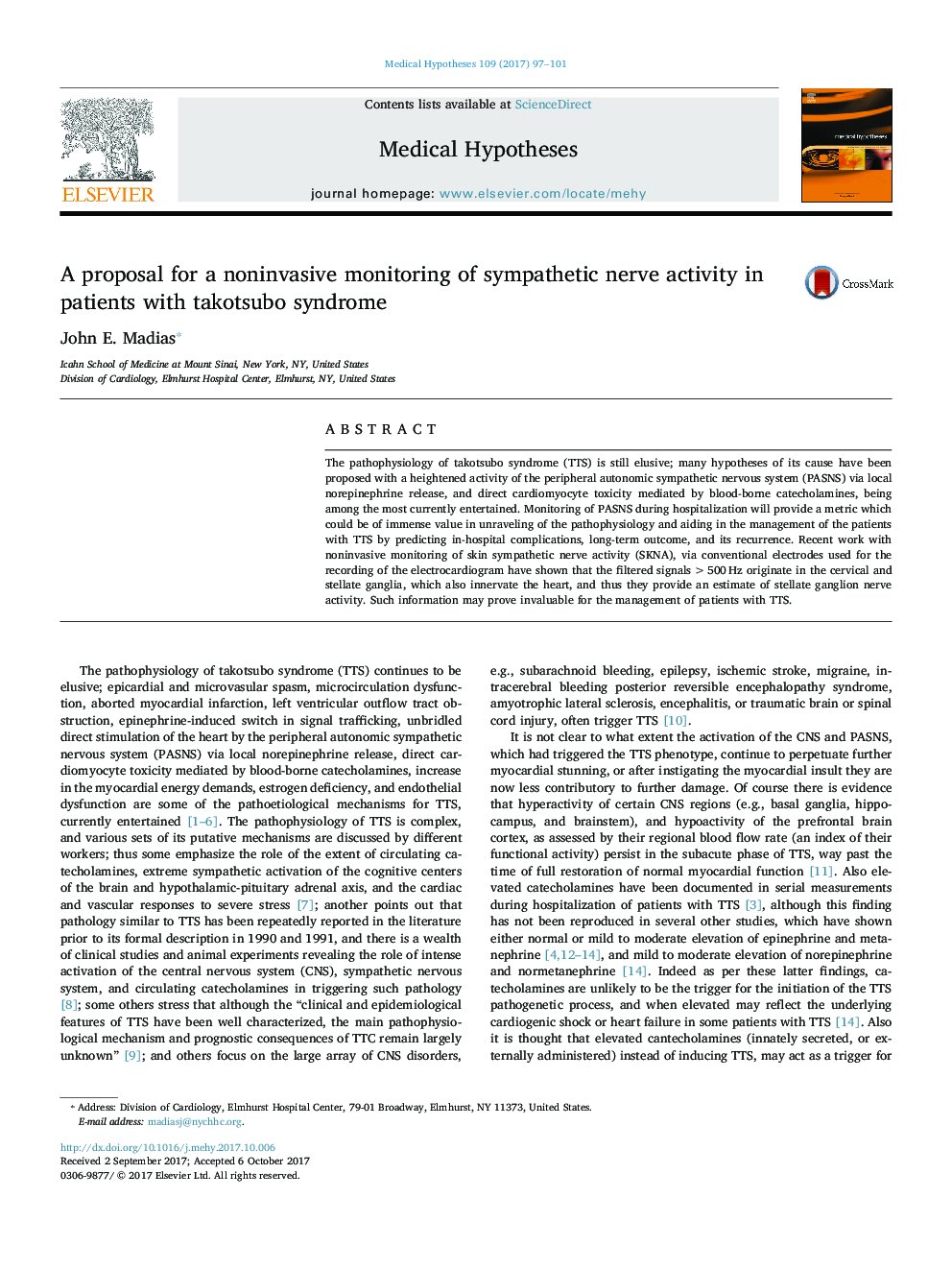| Article ID | Journal | Published Year | Pages | File Type |
|---|---|---|---|---|
| 5548316 | Medical Hypotheses | 2017 | 5 Pages |
The pathophysiology of takotsubo syndrome (TTS) is still elusive; many hypotheses of its cause have been proposed with a heightened activity of the peripheral autonomic sympathetic nervous system (PASNS) via local norepinephrine release, and direct cardiomyocyte toxicity mediated by blood-borne catecholamines, being among the most currently entertained. Monitoring of PASNS during hospitalization will provide a metric which could be of immense value in unraveling of the pathophysiology and aiding in the management of the patients with TTS by predicting in-hospital complications, long-term outcome, and its recurrence. Recent work with noninvasive monitoring of skin sympathetic nerve activity (SKNA), via conventional electrodes used for the recording of the electrocardiogram have shown that the filtered signals >500â¯Hz originate in the cervical and stellate ganglia, which also innervate the heart, and thus they provide an estimate of stellate ganglion nerve activity. Such information may prove invaluable for the management of patients with TTS.
